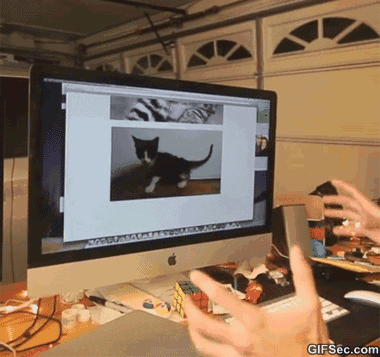6 Landing Page Mistakes Killing Your Conversions
- 6 Biggest Landing Page Mistakes
- 1. Your landing page is too slow
- 2. Your landing pages have a poor mobile experience
- 3. Your landing page is vague
- 4. You use way too much jargon
- 5. Your visuals don't tell a story
- 6. You lack a specific call to action
- What makes a perfect landing page?
- What is the success rate of landing pages?
- Improve your landing page performance
Your product is outstanding, your business is ready, and you’re driving dozens of leads to your landing pages. There’s only one problem: those customers aren’t converting. They land on a page, click around, and then leave. You’re left watching your marketing ROI drop as more and more customers land on your pages and bounce in confusion.
What went wrong? Why won’t they respond to your content?

6 Biggest Landing Page Mistakes
If you’re not seeing the conversion rate you want, keep reading. You may be making one of these six landing page mistakes that are killing your conversions.
1. Your landing page is too slow
Even the best-designed landing pages will have low engagement rates if customers bounce before the page loads. Amazon realized that every millisecond delay (one-thousandth of a second) resulted in a one percent drop in revenue. While your web customers might not expect your site to perform on Amazon’s level, they do expect fast results.
Faster pages can result in a 16.5% increase in conversion rates as users stay focused and engaged with your brand.
Look at your average load times and see how they compare to other pages on the web. You may find that your site design is slowing down your landing pages and driving customers away.

2. Your landing pages have a poor mobile experience
Most companies still design and develop on desktops for desktops. While many hosting sites like WordPress and Wix automatically create mobile-optimized content from the desktop view, not all mobile experiences look good. If your landing page is hard to navigate once you switch to your smartphone, then you’re going to isolate more than half of your site traffic.
62% of Americans say they expect companies to have an optimized mobile website, and 40% say they have bounced to a competitor when they encounter a website with a poor mobile experience.
Your customers aren’t as patient as you think they are. Look at your mobile experience and work to make it just as good (if not better) than your desktop pages.

3. Your landing page is vague
As you drive new traffic to your landing page, you need to be clear about the goal and function of the landing page, who you are speaking to, and what you want people to do next.
Hierarchy of information is one of the most under-appreciated design elements. Your landing page should clearly communicate the most important messages and calls to action quickly and logically. Don’t bury the action you want someone to take or the most important proposition you have to make.
Be clear about what your landing page is offering, and you won’t lose customers due to confusion.

4. You use way too much jargon
In a world of constant “disruption,” and “blue sky thinking,” it’s easy to fill your landing pages with high-level jargon that leaves site visitors more confused than they were before.
The most hated office buzzword of 2023 was “the new normal,” with 42% of respondents listing it as most annoying. 18% hated the phrase “lean in,” and 16% hated the term “hop on a call.”
Test out your jargon levels by running landing page tests with a few people who aren’t familiar with your brand. Ask for honest feedback about what they think your company does and if the brand messaging is confusing. No matter how impressive your visuals or how fast your website, if you don’t have high quality content, people won’t be engaged.

5. Your visuals don’t tell a story
Along with adding too much jargon, you don’t want to have too much text on a landing page. The internet is an increasingly visual place, with channels like YouTube and Instagram feeding our desire to watch instead of read. Consider adding captivating visuals and even video to your landing pages; you can watch your conversions increase and customer interest grow.
By adding a video to its main landing page, Dropbox was able to increase its conversions by 33%.
If you really want to take your visual content to the next level, A/B test different image types to see how customers respond to stock photos versus product photos or lifestyle shots to maximize conversions.

6. You lack a specific call to action
What concrete steps do you want your site visitors to take on your landing page? Do you want them to buy a product? Call for more information? Book an appointment? Make sure you are guiding your site visitors to convert with a clear call to action telling them what to do and how to do it.
Almost three-quarters (70%) of small business websites lack a clear call to action.
Again, this is something that you can A/B test. Look for different calls to action and different placements to see how customers respond. Even if you have a call to action, it might not be clear enough to make people convert.

What makes a perfect landing page?
A great landing page should be clear, direct, and a natural extension of the ad that led to it. Something drove your users to click on an ad and come to your landing page: you want them to instantly understand how to take the next step. Make sure the branding, design, messaging, and images are consistent enough to establish continuity. Provide a clear CTA so they know where to go from here. You should also consider using optimization software such as Google Optimize to improve your landing page’s performance.
What is the success rate of landing pages?
There are a number of different ways to measure the success of a landing page. Is it getting lots of page views? Does it have a low bounce rate? How long is the average session? All of these metrics are useful for figuring out how users are interacting with your page, but the real bottom line is the conversion rate.
Landing page conversion rates vary widely depending on the industry. But across them all, the average was 2.35%. But the top 10% of landing pages have a rate of 11.45% or higher! Whatever rate you’re achieving with your page, implementing the best practices we’ve recommended above will help notch that number higher.
Improve your landing page performance
At Big Sea, we’re happy to review your landing pages and talk about what they need. Get a free digital marketing consultation and we’ll dig in and take a look.


